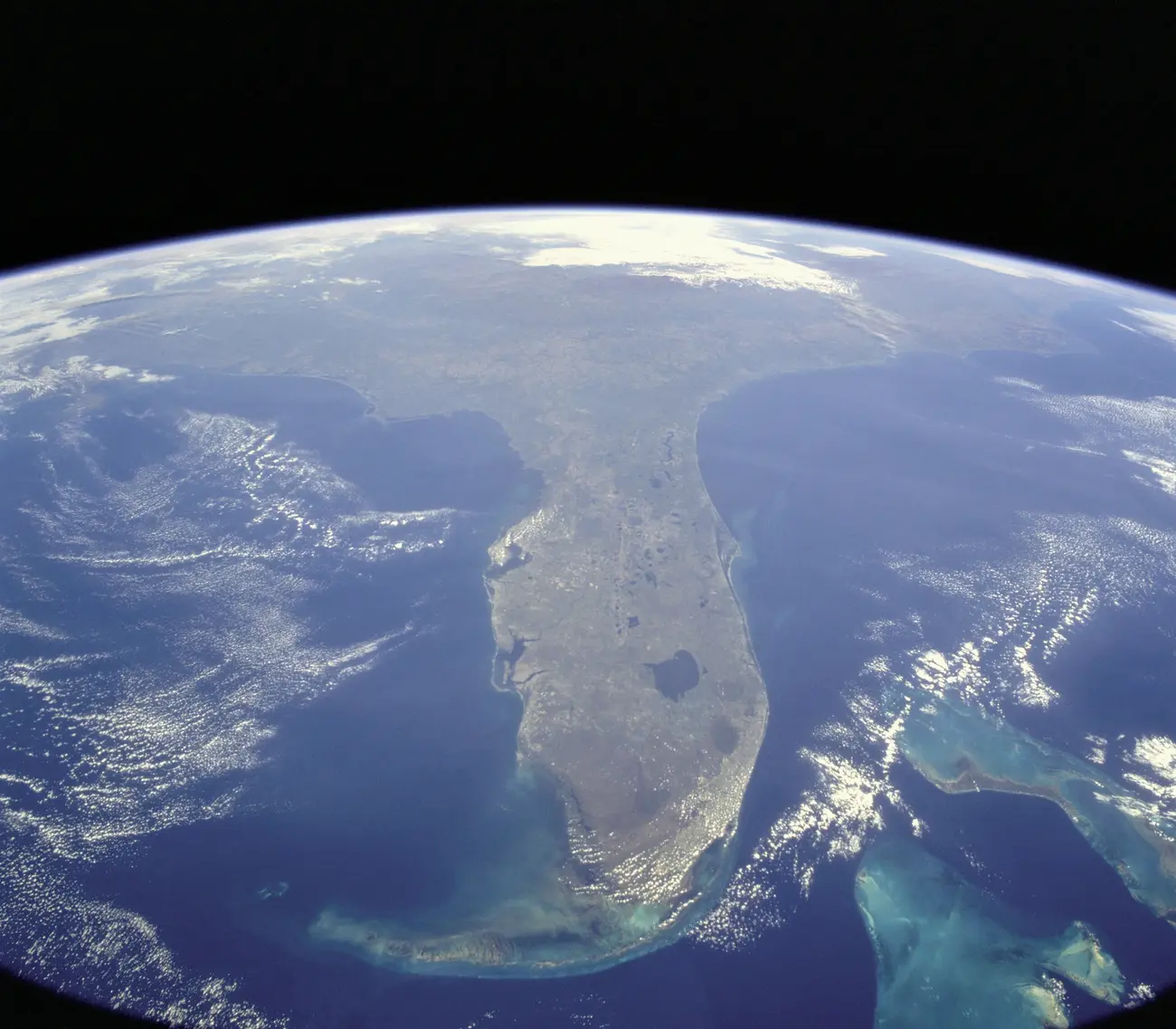Florida has a diverse wealth of geological resources.
People have enjoyed the sands of Florida’s beaches for more than 12,000 years. Prehistoric people in Florida used chert to make weapons and tools. Later indigenous people used clay to create bowls and storage containers.
Coquina rock provided a practical building material for Spanish colonists. The Castillo de San Marcos in St. Augustine was originally constructed in 1672 using coquina and the fort remains undefeated in battle.
The Seminole Indians and runaway slaves sought refuge among the stalactites and stalagmites in the caverns of north Florida.
As early as the late 1800s, automobile races were held on the firm sands of Ormond Beach and Daytona Beach.
Phosphate, used as fertilizer and in some explosives, was discovered in abundant quantities in the late nineteenth century. By the early twentieth century, phosphate mining was a major industry in Florida. Today, Florida provides about 80 percent of the phosphate used in the United States, and about 25 percent of the phosphate used around the world.
It took tens of millions of years for Florida’s geological resources to develop. Millions of years ago, North America looked much different than it does today, because Florida was completely submerged.
“During the early part of the Cenozoic Period which was about 65 million years ago, Florida was for the first 10 to 15 to 20 million years of that, completely underwater, and the limestone deposits which are underneath our feet here were being deposited at that time,” says Harley Means, assistant state geologist and co-author of the book “Roadside Geology of Florida.”
A prehistoric version of what is now called the Gulf Stream helped to keep Florida under water for millions of years.
“It kept all of the sediments that were being shed off of the Appalachian mountains, things like clays and silica sands, it kept them shunted away from the carbonate deposit that was going on in Florida,” says Means. “Florida’s limestones from that time period are very pure with respect to calcium carbonate. They’re 99 percent pure and that makes them sought after for numerous industries that would look to exploit them.”
Over millions of years, deposits did start to accumulate to create the Florida we know today. At different points in time, Florida would have appeared to be a series of islands, as sea levels fluctuated and our coastline shifted. At other points in time our state was twice as wide as it is now.
“Over the past 2.6 million years, during a period we call the Pleistocene Epoch, sea levels have fluctuated greatly,” says Means. “They were between 60 and 100 feet higher than they are today, and at some point, probably at multiple points, it was as low as 350 to 400 feet lower than it currently is today. So, the broader part of Florida, which we call the Florida Platform, is actually about twice as large as what the currently exposed, above sea level portion is today. So when the first Floridians came to Florida, they had a lot wider area to roam.”
Fossil evidence shows that land animals have inhabited Florida for 30 million years. The remains of mastodon, giant sloth, sabre tooth tigers, and armadillos the size of small cars have been discovered. Skeletons of Ice Age creatures can be seen at the Brevard Museum of History and Natural Science in Cocoa.
In the past, sea levels have risen to the point where only the highest portions of the Florida peninsula were exposed. Means says that Floridians today need to be aware that the same conditions are in Florida’s future.
“Sea level and climate change is inevitable,” says Means. “Sea levels have fluctuated all through geologic time, so too have climates. Really, the only debate is what is the extent of the impact of human activity on climate change. Unfortunately, we as Floridians live in a state that has very little topography. Many of us like to live right on the coast, so the first people that are going to be impacted by sea level rise, are going to be Floridians. We need to be thinking about this. I can’t tell you when, but I can tell you it is coming.”
